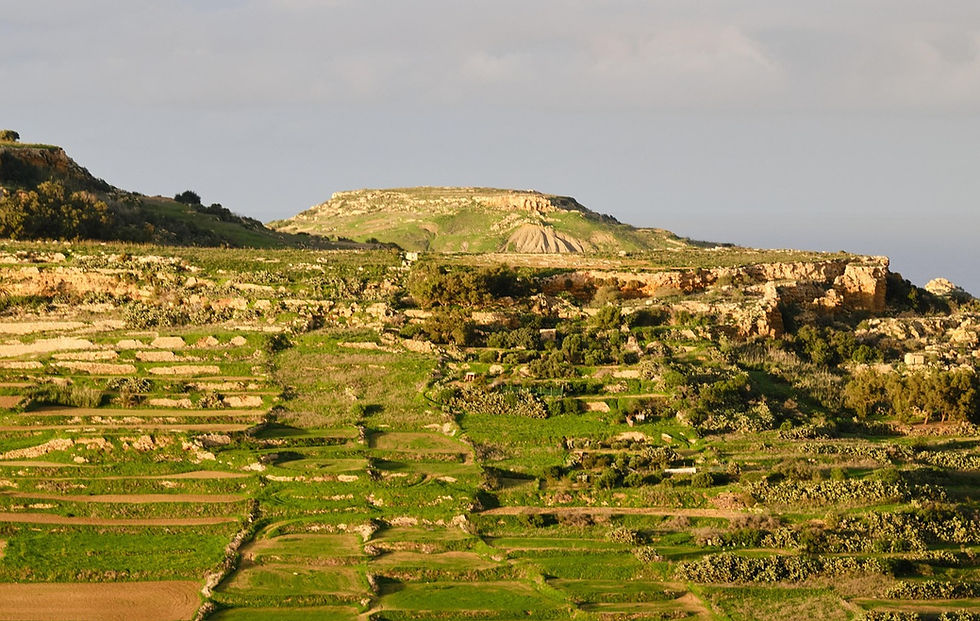Malta's History of Crime & Punishment
- Dr Renè Darmanin

- Apr 4, 2021
- 3 min read
Updated: Apr 9, 2021
The term 'crime' is hard to define but from a legal standpoint a crime may be interpreted as an act of omission or of commission punishable by law. This definition leads to another fascinating concept – the concept of 'law'. The word 'law' in relation to crimes may be explained as an order demanding some sort of behaviour. Accordingly, a crime may be a gesture of insubordination to such a law. Ursula Le Quin in her book 'The Dispossessed' wrote “To make a thief, make an owner; to create crime, create laws”.

Theological beliefs remain central to the legal and criminal justice system in Christian states. Worldwide, other religions are also strongly instrumental on law and concepts of crime but often in different manners. Crime, as we know it today, was not really part of the lexicon of pre-modern era and information about crime was hardly gathered until the nineteenth century.
In Maltese Society, during the period when Malta was under the Order of the Knights of St. John, lawbreakers were made up of evidently distinguishable classes including member of the Order, The Church, The Inquisition, The Non-Privileged Maltese and the Underworld Convicts and slaves.
At the time, crimes mainly consisted of murders, thefts, violent assaults, sexual crimes, financial crimes, escapes from quarantine and escape of slaves and convicts. During such spell, the Maltese Judicial System comprised of three (3) courts.
Throughout this period, cases of murder were decided by The Grand Corte della Castellania which was the prime court of justice. This Court was presided by the Grandmaster. There was also the Ecclesiastical Court. This Court mainly dealt with cases of private nature such as requests for divorce, nuns asking for dispensations an other cases associated with the management of the Church. This Court handled also those cases of ecclesiastics who were charged with carrying out serious crimes, irrespective of whether such crimes were of a religious nature or otherwise. There was also the infamous Inquisitors Court where the Grandmaster, Bishops and the Inquisitor respectively presided. Torture of those found guilty was carried out in the name of the State.
During that time, torture was used for a number of purposes; in fact torture was used both as a form or retribution as well as a way by which the authorities would induce the person charged to a confession. Punishment with respect to severe crimes consisted of execution by public hanging, Originally, executions took place inside prisons but later on some were convicts were executed in public squares. In certain instances, the punishment awarded was mutilation after death where mutilated body parts of the culprit were scattered in various squares to as to send a clear message to society.
The list of tortures is never ending – breaking of fingers, pulling of teeth and burning of body parts. Some of the tools and devices used for torture are still on display at the Inquisitor's Palace in Birgu.
At the time, torture and death were not the only form of punishment. There was slavery too. A person charged and convicted of trivial crimes such as swearing could be punished with a lifetime of slavery. While based in Malta, the Order of the Knights of St. John and its navy engaged in various battles at sea. The Order's naval force needed men to work on their ships and offenders were frequently condemned to work as slaves on such ships.
Interestingly, the idea of reforming criminals was completely non-existent. The Maltese legislator has moved with the times and nowadays the Maltese Criminal Code as well as the Probation Act present us with other modes of punishment which our courts of criminal jurisdiction may resort to. Such punishments may range from reprimands, admonitions, fines, probation orders, community service orders, suspended sentences to imprisonment. It is in the discretion of the judge and/or magistrate to decide which punishment is adequate in the circumstances of the case after taking into account any aggravating and/or mitigating factors, any progress which the offender has managed to make pending conviction as well as the gravity of the offence in question.
Dr Renè Darmanin is an Associate at PROLEGAL Advocates.
Disclaimer: This article is not to be construed as being legal advice, and is not to be acted on as such. Should you require further information or legal assistance, please do not hesitate to contact Dr Renè Darmanin at rene@prolegal.mt.



